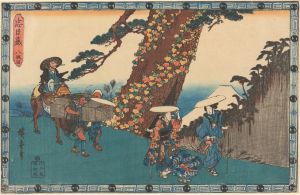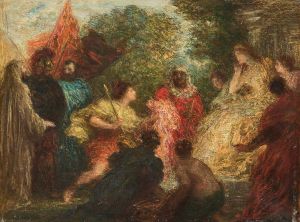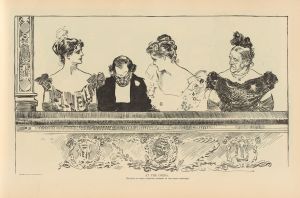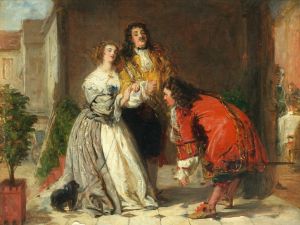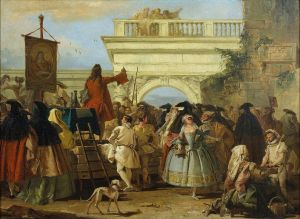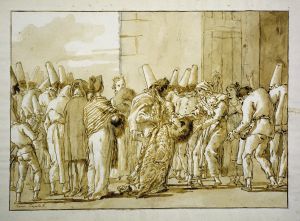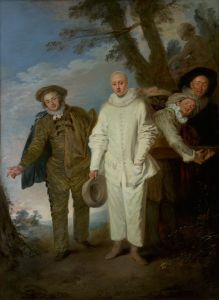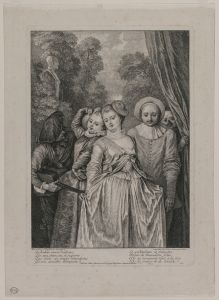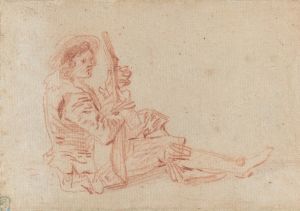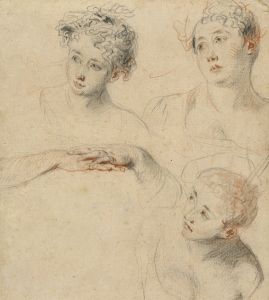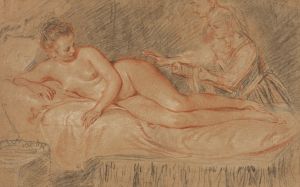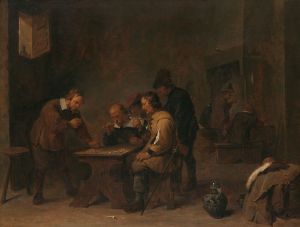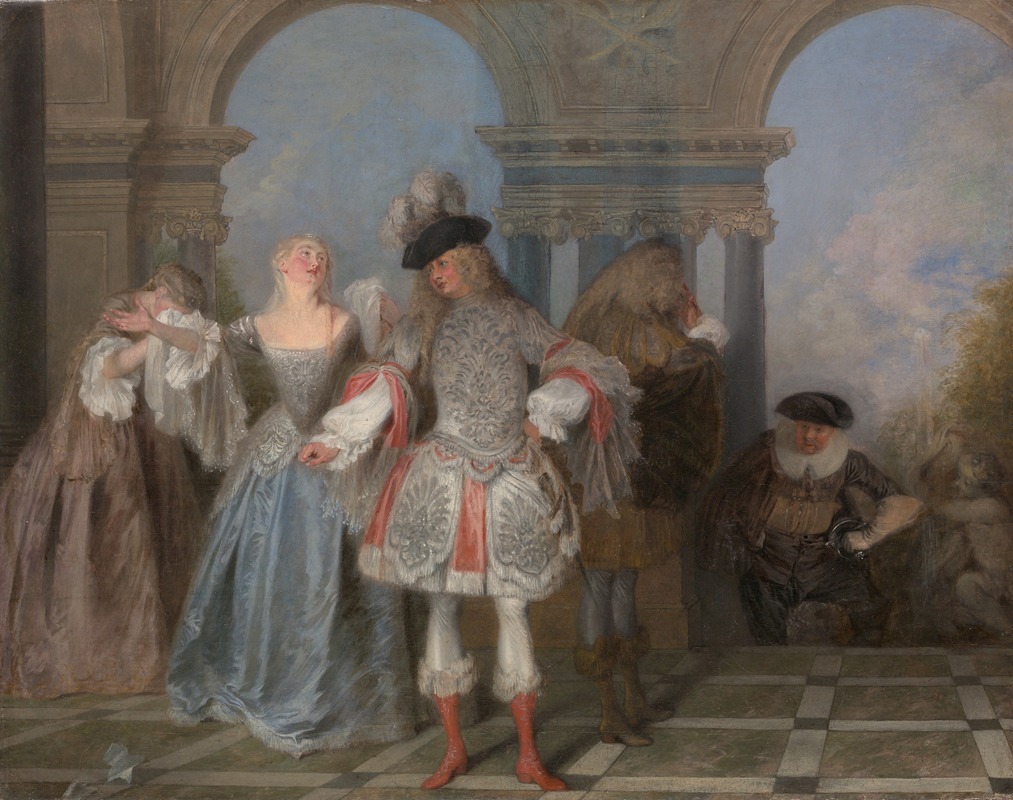
The French Comedians
A hand-painted replica of Jean-Antoine Watteau’s masterpiece The French Comedians, meticulously crafted by professional artists to capture the true essence of the original. Each piece is created with museum-quality canvas and rare mineral pigments, carefully painted by experienced artists with delicate brushstrokes and rich, layered colors to perfectly recreate the texture of the original artwork. Unlike machine-printed reproductions, this hand-painted version brings the painting to life, infused with the artist’s emotions and skill in every stroke. Whether for personal collection or home decoration, it instantly elevates the artistic atmosphere of any space.
Jean-Antoine Watteau's The French Comedians is an oil painting created around 1720 by the renowned French Rococo artist. Watteau, celebrated for his depictions of theatrical scenes, fêtes galantes, and elegant figures, often drew inspiration from the world of performance, particularly the commedia dell'arte and French theater. This painting exemplifies his fascination with the interplay between art, performance, and human emotion.
The French Comedians portrays a group of actors in a theatrical setting, likely referencing the commedia dell'arte tradition, which was popular in Europe during the 17th and 18th centuries. The figures are dressed in elaborate costumes, each representing a specific character type associated with this theatrical genre. Watteau's attention to detail in the costumes and gestures of the performers highlights his ability to capture the nuances of theatrical expression and the personalities of the characters.
The composition of the painting is dynamic, with the actors arranged in a lively, almost chaotic manner, suggesting the spontaneity and energy of a theatrical performance. The figures are set against a loosely defined background, which enhances the focus on the performers themselves. Watteau's use of soft, luminous colors and delicate brushwork creates a dreamlike atmosphere, characteristic of his Rococo style.
One of the central figures in the painting is Pierrot, a recurring character in Watteau's works. Pierrot, dressed in his signature white costume, is often depicted as a melancholic or introspective figure, contrasting with the more animated characters around him. This juxtaposition adds a layer of emotional depth to the painting, inviting viewers to reflect on the complexities of human emotion and the nature of performance.
Watteau's interest in theatrical themes was influenced by the cultural milieu of early 18th-century France, where theater and performance were integral to social life. The commedia dell'arte, with its blend of humor, improvisation, and archetypal characters, provided a rich source of inspiration for the artist. Watteau's ability to capture the essence of these performances in his paintings contributed to his reputation as one of the most innovative and influential artists of his time.
Today, The French Comedians is recognized as a masterpiece of Rococo art and a testament to Watteau's skill in blending theatricality with painterly elegance. The painting is housed in the National Gallery of Art in Washington, D.C., where it continues to be admired for its beauty, complexity, and insight into the world of 18th-century theater.





